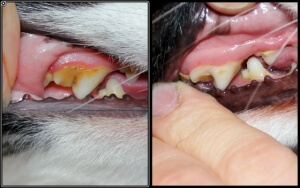Top 13 Canident For Dogs In 2022
1. Canident clean dogs teeth fix bad breath and remove plaque
- Author: seaweedfordogs.com
- Date Submitted: 07/31/2022 01:53 PM
- Average star voting: (4.81/5 stars and 98117 reviews)
- Summary: Canident is a blend of three Irish brown seaweeds, nothing else, that cleans your dogs teeth naturally by preventing the formation of plaque on the dogs teeth and loosening the tartar that has already formed. Improve your dogs oral hygiene and general health.
- Match with the search results: Canident is a blend of three brown seaweeds that is fed to dogs to keep their teeth clean from plaque and to reduce bad breath. Using only Irish seaweeds, that …
Read more: Top 14 Alphabet Dog Tricks In 2022
2. Canident goodbye tartar and smelly dog breath naturally dogs first
- Author: dogsfirst.ie
- Date Submitted: 03/21/2022 11:11 PM
- Average star voting: (3.77/5 stars and 36966 reviews)
- Summary: Canident is a popular blend of brown seaweeds that reduces the tartar on your dog’s teeth in 5-8wks or your money back. No quibbles.
- Match with the search results: Canident is a blend of three brown seaweeds that are not only anti-inflammatory and highly nutritious but studies show (and our consistent 5-star reviews …

3. 3d morphometric analysis of fossil canid skulls contradicts the suggested domestication of dogs during the late paleolithic scientific reports
- Author: www.nature.com
- Date Submitted: 09/02/2022 03:23 PM
- Average star voting: (3.59/5 stars and 92864 reviews)
- Summary: Whether dogs were domesticated during the Pleistocene, when humans were hunter-gatherers, or during the Neolithic, when humans began to form permanent settlements and engage in agriculture, remains controversial. Recently discovered Paleolithic fossil skulls, Goyet dated 31,680 +/− 250 YBP and Eliseevichi MAE 447/5298 dated 13,905 +/− 55 YBP, were previously identified as dogs. However, new genetic studies contradict the identification of these specimens as dogs, questioning the validity of traditional measurements used to morphologically identify canid fossil skulls. We employ 3D geometric morphometric analyses to compare the cranial morphology of Goyet and Eliseevichi MAE to that of ancient and modern dogs and wolves. We demonstrate that these Paleolithic canids are definitively wolves and not dogs. Compared to mesaticephalic (wolf-like breeds) dog skulls, Goyet and Eliseevichi MAE, do not have cranial flexion and the dorsal surface of their muzzles has no concavity near the orbits. Morphologically, these early fossil canids resemble wolves and thus no longer support the establishment of dog domestication in the Paleolithic.
- Match with the search results: Feb 5, 2015 … Whether dogs were domesticated during the Pleistocene, when humans were hunter-gatherers, or during the Neolithic, when humans began to form …
Read more: Top 9 Aqua Di Dog In 2022
4. Ancient dna analysis affirms the canid from altai as a primitive dog
- Author: journals.plos.org
- Date Submitted: 09/10/2022 11:02 AM
- Average star voting: (4.27/5 stars and 13054 reviews)
- Summary: The origin of domestic dogs remains controversial, with genetic data indicating a separation between modern dogs and wolves in the Late Pleistocene. However, only a few dog-like fossils are found prior to the Last Glacial Maximum, and it is widely accepted that the dog domestication predates the beginning of agriculture about 10,000 years ago. In order to evaluate the genetic relationship of one of the oldest dogs, we have isolated ancient DNA from the recently described putative 33,000-year old Pleistocene dog from Altai and analysed 413 nucleotides of the mitochondrial control region. Our analyses reveal that the unique haplotype of the Altai dog is more closely related to modern dogs and prehistoric New World canids than it is to contemporary wolves. Further genetic analyses of ancient canids may reveal a more exact date and centre of domestication.
- Match with the search results: Mar 6, 2013 … Our analyses reveal that the unique haplotype of the Altai dog is more closely related to modern dogs and prehistoric New World canids than it …
5. Dog colour patterns explained by modular promoters of ancient canid origin nature ecology evolution
- Author: www.nature.com
- Date Submitted: 05/08/2022 09:23 PM
- Average star voting: (3.98/5 stars and 18367 reviews)
- Summary: Distinctive colour patterns in dogs are an integral component of canine diversity. Colour pattern differences are thought to have arisen from mutation and artificial selection during and after domestication from wolves but important gaps remain in understanding how these patterns evolved and are genetically controlled. In other mammals, variation at the ASIP gene controls both the temporal and spatial distribution of yellow and black pigments. Here, we identify independent regulatory modules for ventral and hair cycle ASIP expression, and we characterize their action and evolutionary origin. Structural variants define multiple alleles for each regulatory module and are combined in different ways to explain five distinctive dog colour patterns. Phylogenetic analysis reveals that the haplotype combination for one of these patterns is shared with Arctic white wolves and that its hair cycle-specific module probably originated from an extinct canid that diverged from grey wolves more than 2 million years ago. Natural selection for a lighter coat during the Pleistocene provided the genetic framework for widespread colour variation in dogs and wolves. Dogs exhibit remarkable variation in colour patterns. Here, the authors identify structural variants of independent regulatory modules for ventral and hair cycle expression of the ASIP gene that explain five distinctive dog colour patterns and trace back the origin of one colour pattern to an extinct canid.
- Match with the search results: Aug 12, 2021 … Distinctive colour patterns in dogs are an integral component of canine … and trace back the origin of one colour pattern to an extinct canid.
from Group Of Pets https://ift.tt/lOwZfbB
via IFTTT
Nhận xét
Đăng nhận xét